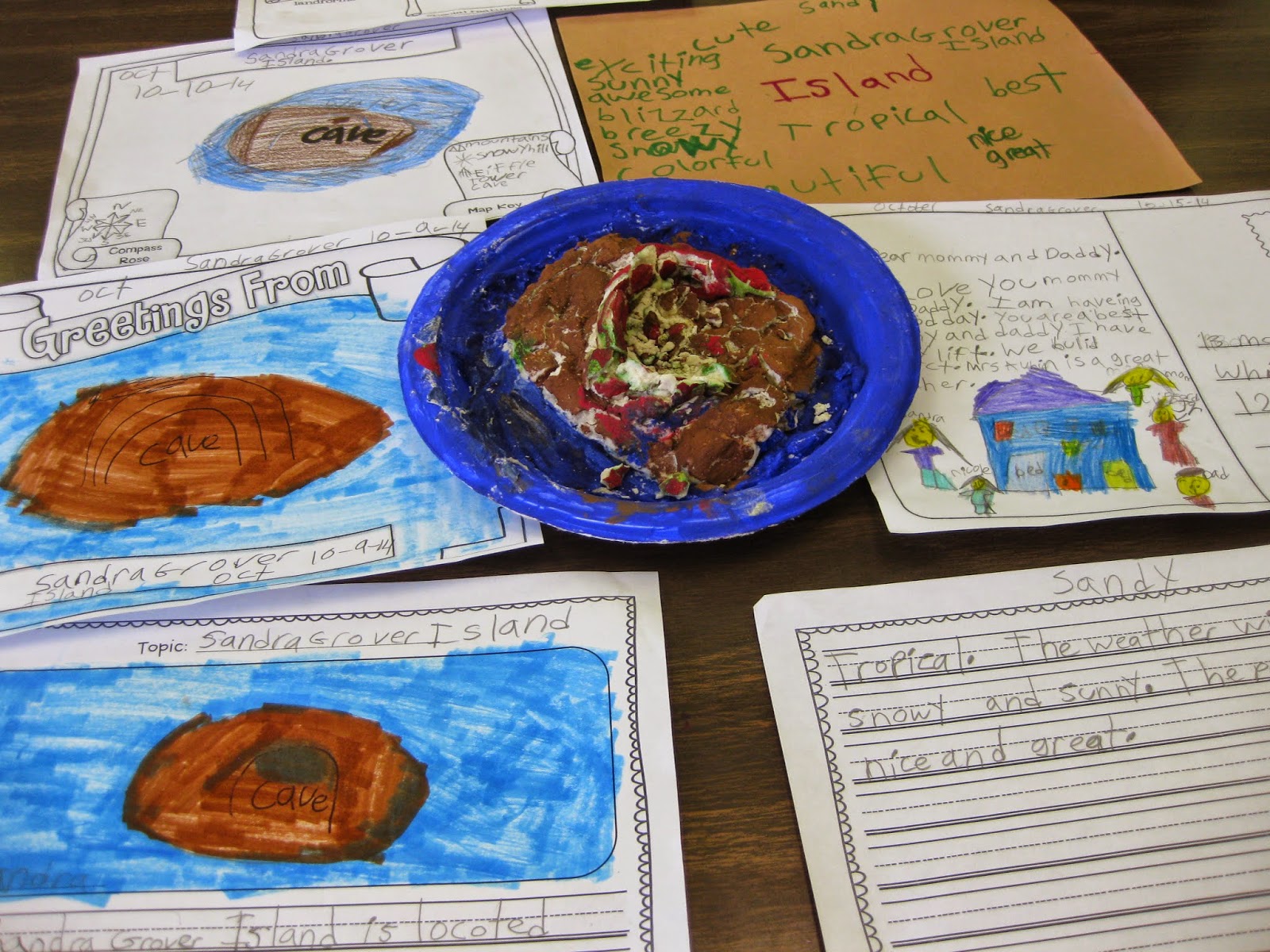Early in the school year, we began an unit on landforms in science. This led us into a discussion on maps in social studies. Maps brought us to the creation of salt dough islands which again brought us back to landforms but also opened us up to a discussion on adjectives in English Language Arts (ELA) class that can be used to describe the islands. What a whirlwind! Next we used the adjectives to write a descriptive essay on each individual island. The students had to name their island, describe the landforms, discuss the island's special features, describe the weather, and describe the people that live on the island. Discussing the weather crossed over to science class where we are doing a weather unit! The students had to locate on our classroom maps, where in the world their island would be located!
Deep-learning that is gleaned through cross-curricular teaching, integrates the heart, mind, body, and soul; making each project personal. This will help the students to retain this information long into the future.
As with Project based learning (PBL) when students use ELA skills, hands on learning, and interact with their teachers, aides, parents, and peers, about what they are creating it improves learning. PBL and Cross-curricular learning take all learning styles into account: kinesthetic,visual, and auditory so both strategies benefit the whole child and all learners involved.
Salt-dough Recipe:
Each recipe makes enough salt-dough for 4 to 5 students.
Ingredients:
2 Cups of all-purpose flour
1 cup of salt
1 cup of cold water
Directions:
1) In a large bowl mix salt and flour.
2) Gradually add in water. Mix well, until it forms a play-dough consistency (being careful
not to make it too moist).
3) Form a ball and knead it for at least five minutes. The longer you knead it, the smoother
it will be.
4) Store in an air-tight container unless you are sculpting with it. I recommend chinet
paper plates if you are making an island such as my students did. The end product held
on tightly to the plates and was quite durable.
5) If painting your sculptures, they do not need to be completely dry before doing so. Our
island projects took several days to dry.
Celebrate National Day Writing
http://www.readwritethink.org/classroom-resources/calendar-activities/celebrate-national-writing-20727.html?
Read, Write, Think-Finding Cross Curricular Resources
https://www.youtube.com/watch?v=3VEQHFqfi-o&feature=youtu.be
Parent Links:
Ivory Soap Science and Art
http://minimonetsandmommies.blogspot.com/2014/10/ivory-soap-science-and-art.html
Some Tips on getting the Most Financial Aide
http://www.bachelordegreefacts.com/5-tips-to-get-the-most-financial-aid-for-your-education/
Mitt Aubin's Book Review:













No comments:
Post a Comment